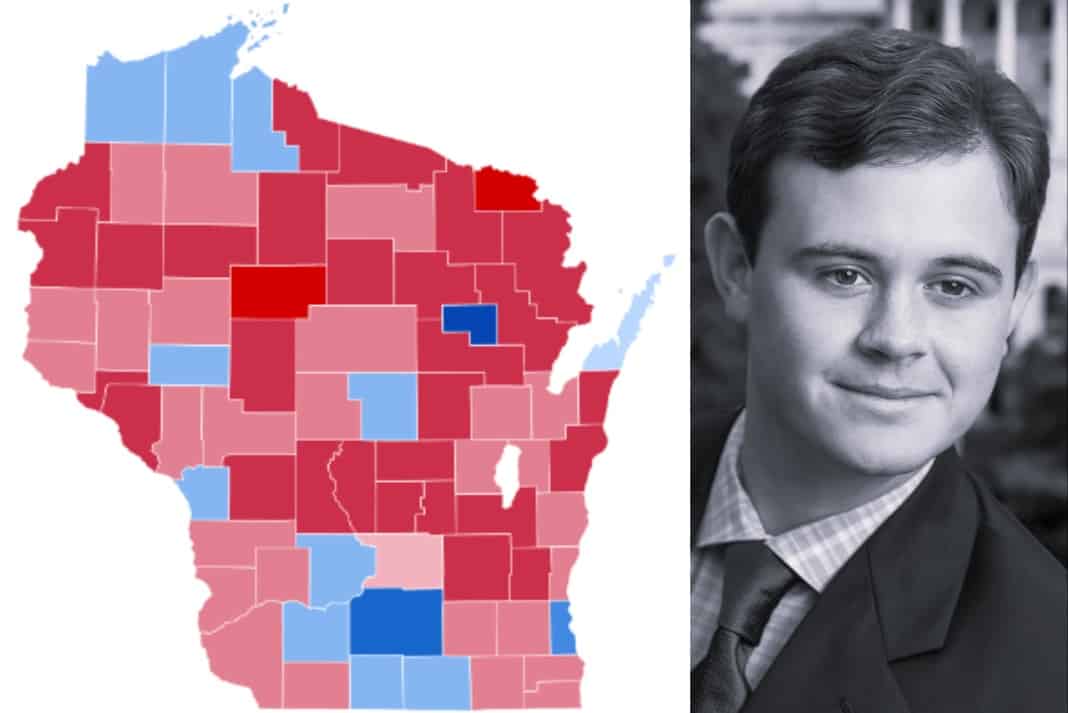Are Wisconsin Republicans going to condemn themselves to perpetually losing elections?
The midterms were not a red wave, conservatives lost the Supreme Court in a landslide, and the 2023 elections were not good for Republicans nationwide. The 2024 election is no longer on the horizon; it is here.
The definition of insanity is doing the same thing repeatedly and expecting a different result. Republicans are guilty of this. How will there ever be a different result if we do not shred the old political playbook to pieces?
Let’s do the math. In the 2020 election, the difference in votes between Biden and Trump in Wisconsin was 20,682 votes. Republicans must make up that margin to win at the Presidential and Senate levels.
Republicans are condemning themselves to perpetually losing elections if they ignore Wisconsin’s blue cities. Milwaukee and Dane can produce votes for Republicans, and there are not enough votes to win solely by running up the margins in Wisconsin’s rural areas.
Milwaukee voters are moving to the WOW counties and bringing their Democrat voting habits with them. Milwaukee County has lost more than 20,000 residents since early 2020, many of whom have moved to the WOW counties. There is an opportunity for Republicans to fill the void in Milwaukee, the second largest deposit of Republican votes in Wisconsin, as the Democrats transfer their resources to the suburbs.
Are Republicans filling the void? No.
The Republican Party of Milwaukee is moving things in the right direction, but they cannot make the difference alone. Our poor results in Milwaukee should be a 5-alarm fire in the party on all levels. The question arises: can the Republican Party even respond to such urgent and time-sensitive political needs anymore?
Follow the stereotypes.
Milwaukee is another corrupt blue city. The vote drop happens at 3 am, and then we lose statewide elections. Republicans will not win Milwaukee outright, so focus on the suburbs.
Now, let’s follow the numbers.
As recently as 2014, Governor Scott Walker received 36% of the vote in Milwaukee. Republicans are now down to 28-29% of the vote.
Milwaukee will showcase the Republican National Convention next July. While the convention will serve as a significant economic boost to the area, its strategic location alone will not yield enough needed new votes to win. Republicans must target the low-turnout wards in Milwaukee.
On the other hand, Dane County is one of Wisconsin’s fastest-growing counties, taking on increased electoral importance every election.
Follow the stereotypes. Dane County doesn’t have Republicans. Madison is the Berkeley of the Midwest. My vote doesn’t matter in Dane County.
Now, let’s follow the numbers.
Waukesha Republicans, the center of the Wisconsin political universe on the right, are in shock and awe when I tell them that Dane County has the third-largest deposit of Republican votes in Wisconsin. I hear the same thing all across the state. This “wow factor” hurts the party’s ability to galvanize meaningful resources into get-out-the-vote efforts.
Senator Ron Johnson got 23% of the vote in Dane County in 2022, carrying the state by 1%. Michels received 21% of the vote in the gubernatorial election and lost. Kelly received 18% of the vote in this year’s Supreme Court election and lost in a landslide. The loss was so bad that 20% of progressive judge Janet Protasiewicz’s votes came from Dane County.
For reference, Dane County makes up 10% of Wisconsin’s population. Dane County also had more total votes in the Supreme Court election than any other county.
Dane County has seen a population growth of 80,000 residents since 2010, and the party has not turned out a single additional Republican voter. Dane County alone can and has sunk statewide election efforts.
Dane County residents have not heard from a prominent Republican candidate who seriously invested time and resources there since the days of Tommy Thompson. Republicans must fill the void to beat back demoralization and turn out voters.
Every vote in a blue area counts just as much as a red area in a statewide election. Are there enough new votes Republicans can win in Milwaukee and Dane to make up the 20,000 Presidential election year vote deficit? Yes, lose by less in blue areas.
In the Trump era, the playbook has been to run up the vote tally in the rural areas to offset Democrat margins in our major cities. This strategy works better in some states and relies heavily on favorable demographic trends. If Trump had done as well with the white, working-class against Biden as he had done against Clinton, he would have won. Our rural areas are not getting much redder.
Follow the stereotypes.
Rural voters come out from the hills to vote for Trump. Trump reengaged rural voters in the political process. The reality is that the peak of rural Wisconsin Republican turnout is when Donald Trump is on the ballot, and we are still at a deficit.
Now, let’s follow the numbers.
If the Republican nominee for President in 2024 were to do better in Wisconsin’s rural areas alone, would they win? If the nominee does 5% better in these areas, that would be a massive swing in just one presidential cycle. But let’s just say that there is a 5% swing in Republican’s favor.
Wisconsin’s 45 least populated counties comprised 364,174 votes of 1,610,184 President
Trump’s received in 2020. If the nominee were to do 5% better in the 45 least populated counties in Wisconsin, Republicans still would not make up the roughly 20,000 vote deficit.
Republicans cannot rely on running up the margins in rural areas alone.
This column did not address the WOW counties on their own because leftists are spilling out from Milwaukee. Get to the root of the problem and recognize that the WOW counties are slowly moving to the left and are already politically oversaturated. Relying on an improvement there alone will not get Republicans statewide victories. Republicans, stop losing. Fill the void in Wisconsin’s blue areas.
This column represents the personal opinion of the author and not this publication or the institutions where he works or volunteers.












